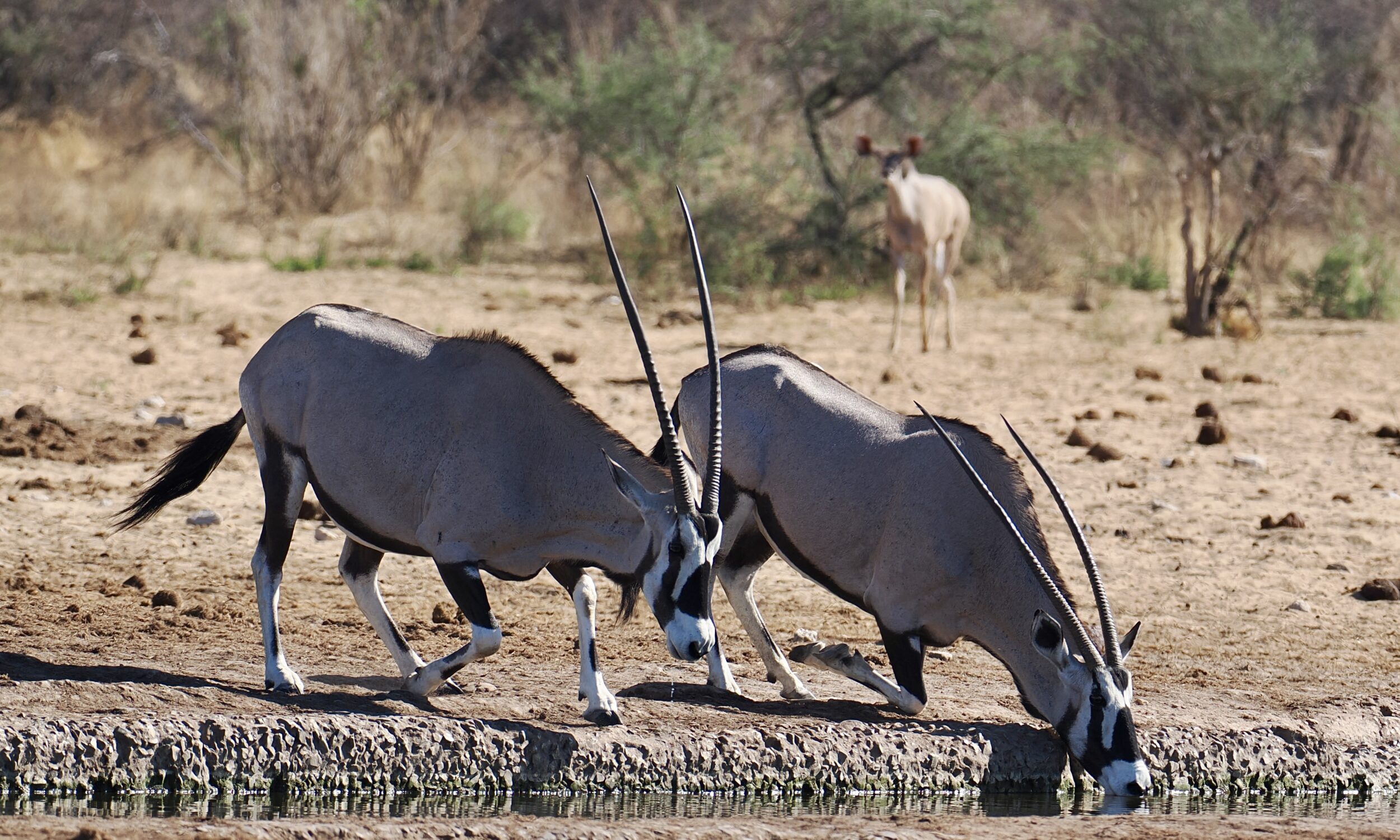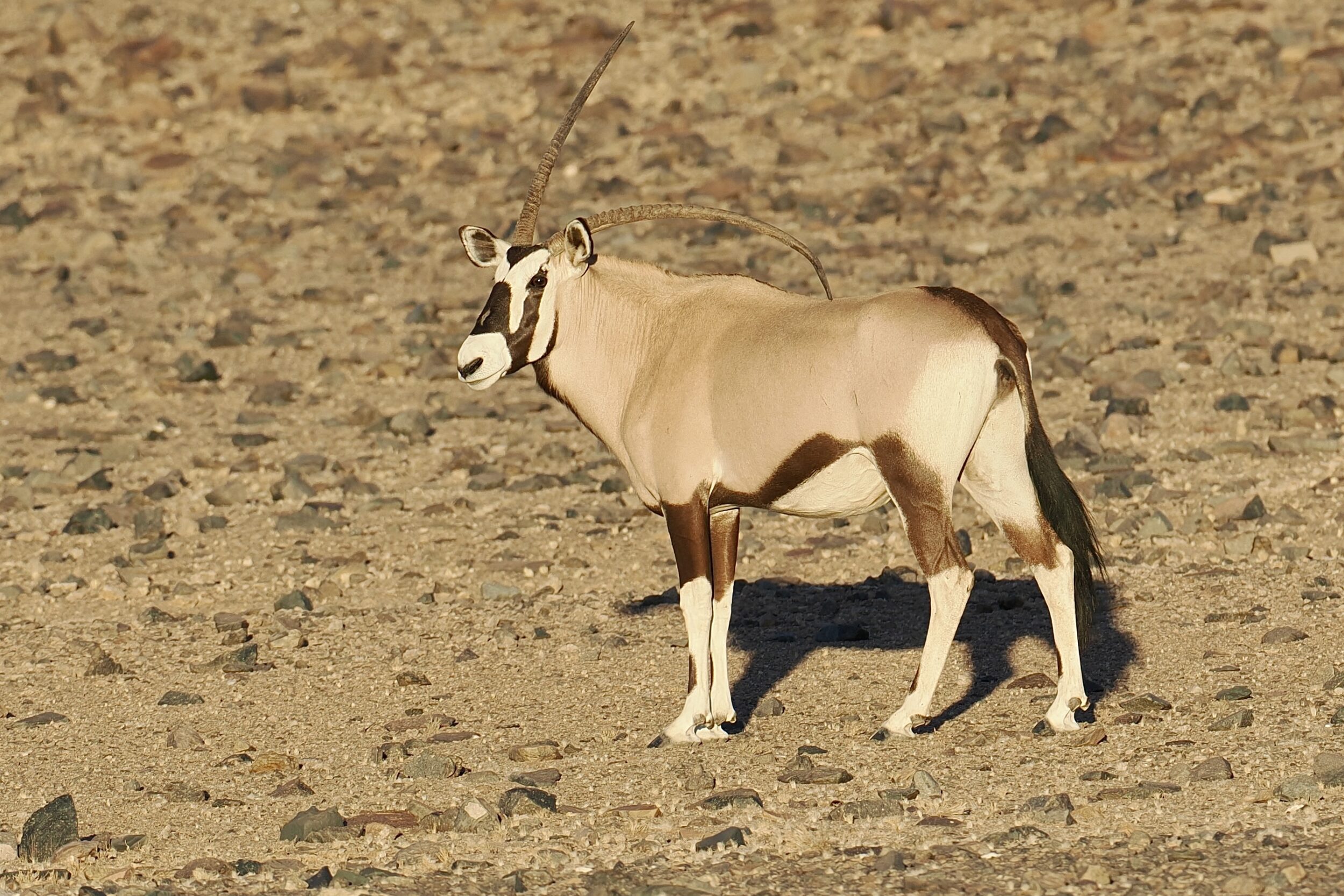The gemsbok – Oryx gazella – is the largest of four oryx species.
This superbly-adapted desert specialist is Namibia’s suitably majestic, emblematic mammal.
Gemsbok are also found in neighbouring southern African nations, and are sometimes known as “South African oryx” or “African oryx”.
They have striking, long, spear-like horns.
Atop the head of each adult male and female, the pair of horns is usually an example of nigh-perfect symmetry.
Not so, here!
Q: could this deformity cause any serious problem for the pictured individual?
A: yes…potentially, it could prove lethal.
In Namibia in November 2022 we enjoyed many encounters with gemsbok – mostly, in the wild, but also as the delicious highlight of some of our meals. (gemsbok is not an endangered species)
Most gemsbok we saw had nigh-perfect horns:

Some individuals had suffered partial loss of a horn – usually, just one – via accident or combat.
However, most especially in the Namib Desert, we encountered a number of individuals with deformed horns. (again, usually, just one horn, as per the featured image, taken in the Namib, shortly before sunset on 23 November 2022)
We were told that in most cases the cause was probably a matter of genetics/hormones, rather than physical injury.
Sometimes, aesthetic imperfection aside, any negative consequences for the individual would be slight.
If the horns on the gemsbok in the featured image have stopped growing, that individual should suffer only a little inconvenience…plus a probable loss of sex appeal.
However, if the horns are still growing, this gemsbok is likely to suffer a very unpleasant death…gored, slowly, by the tip of its deformed horn.
